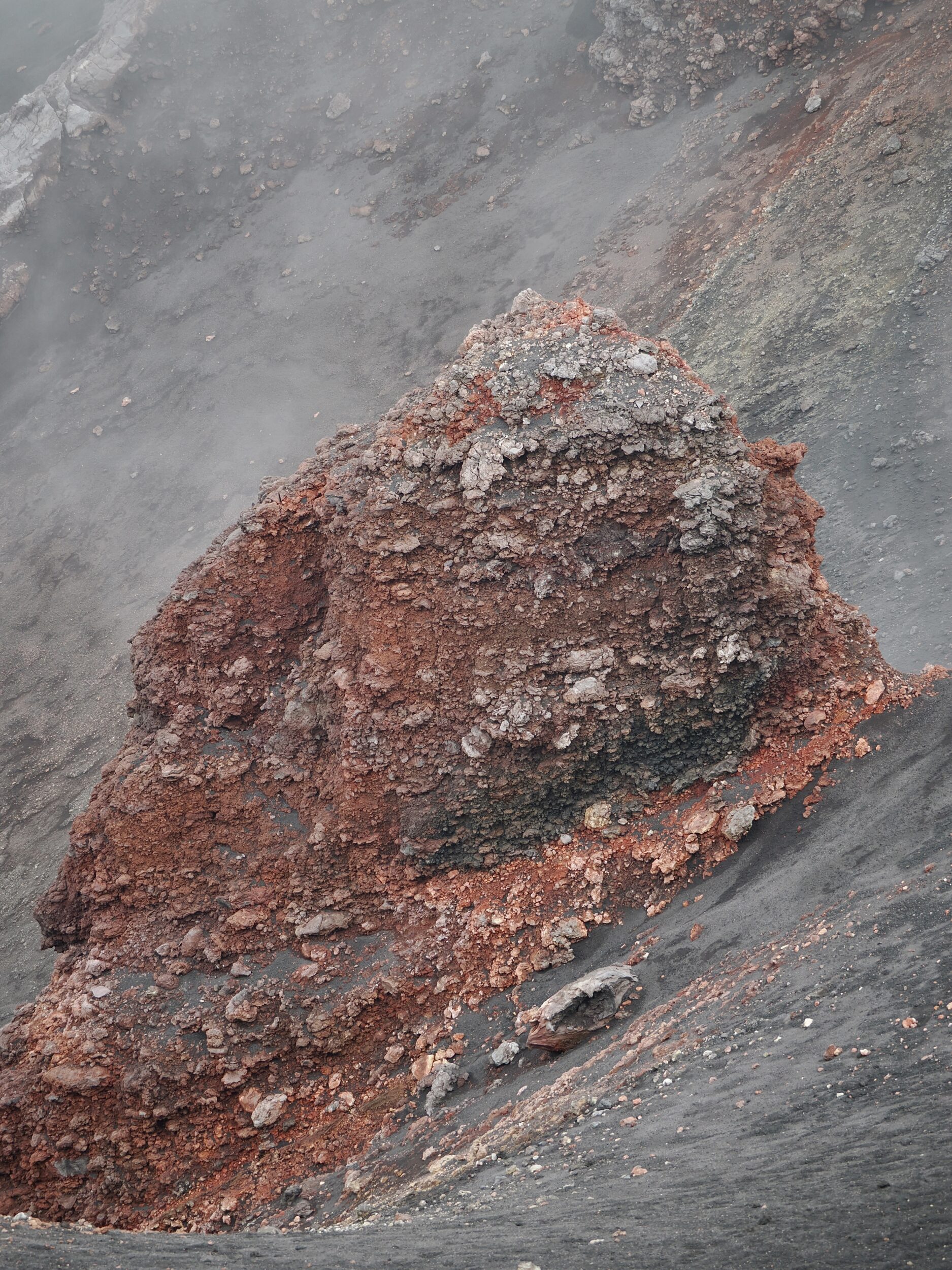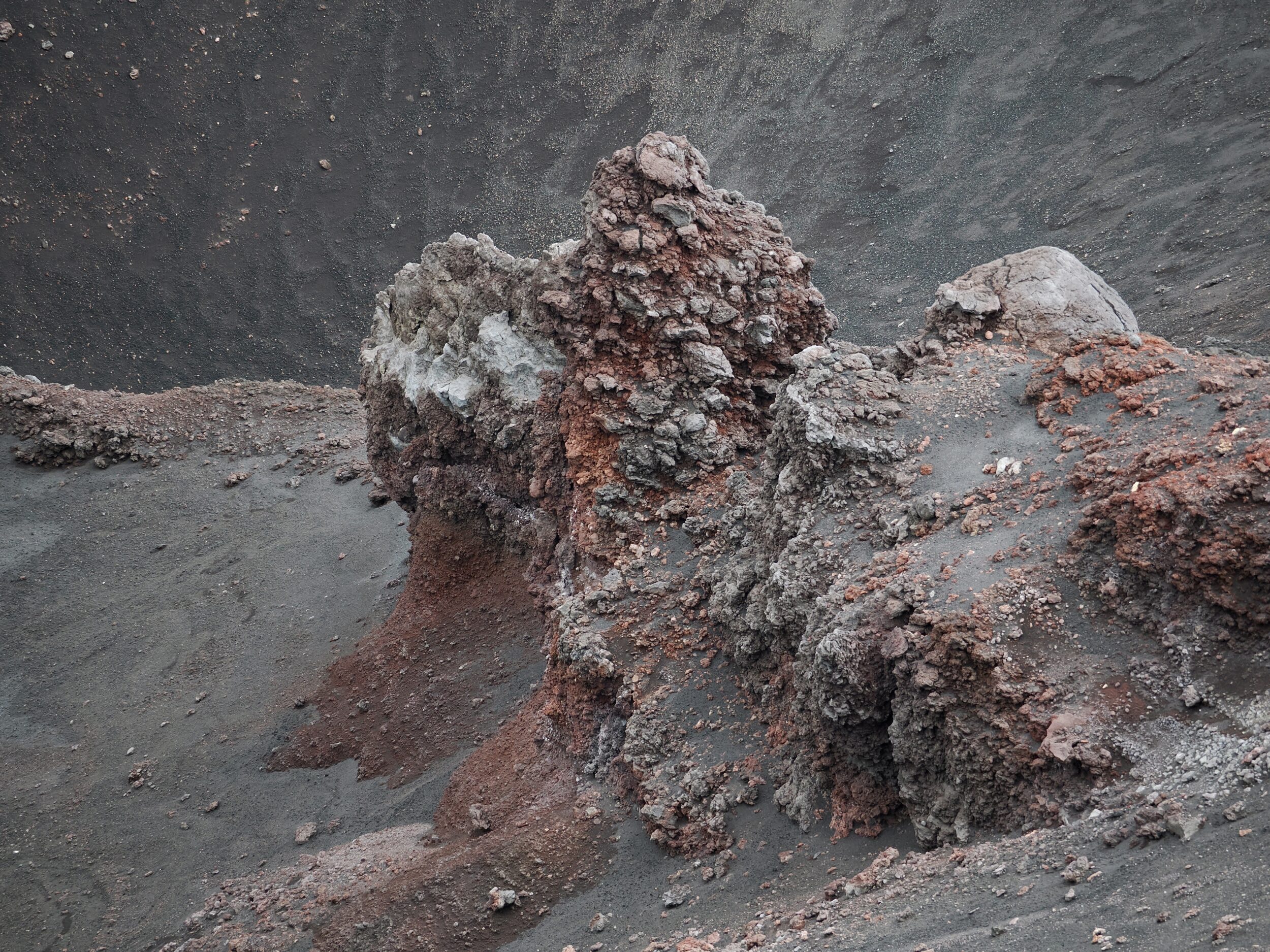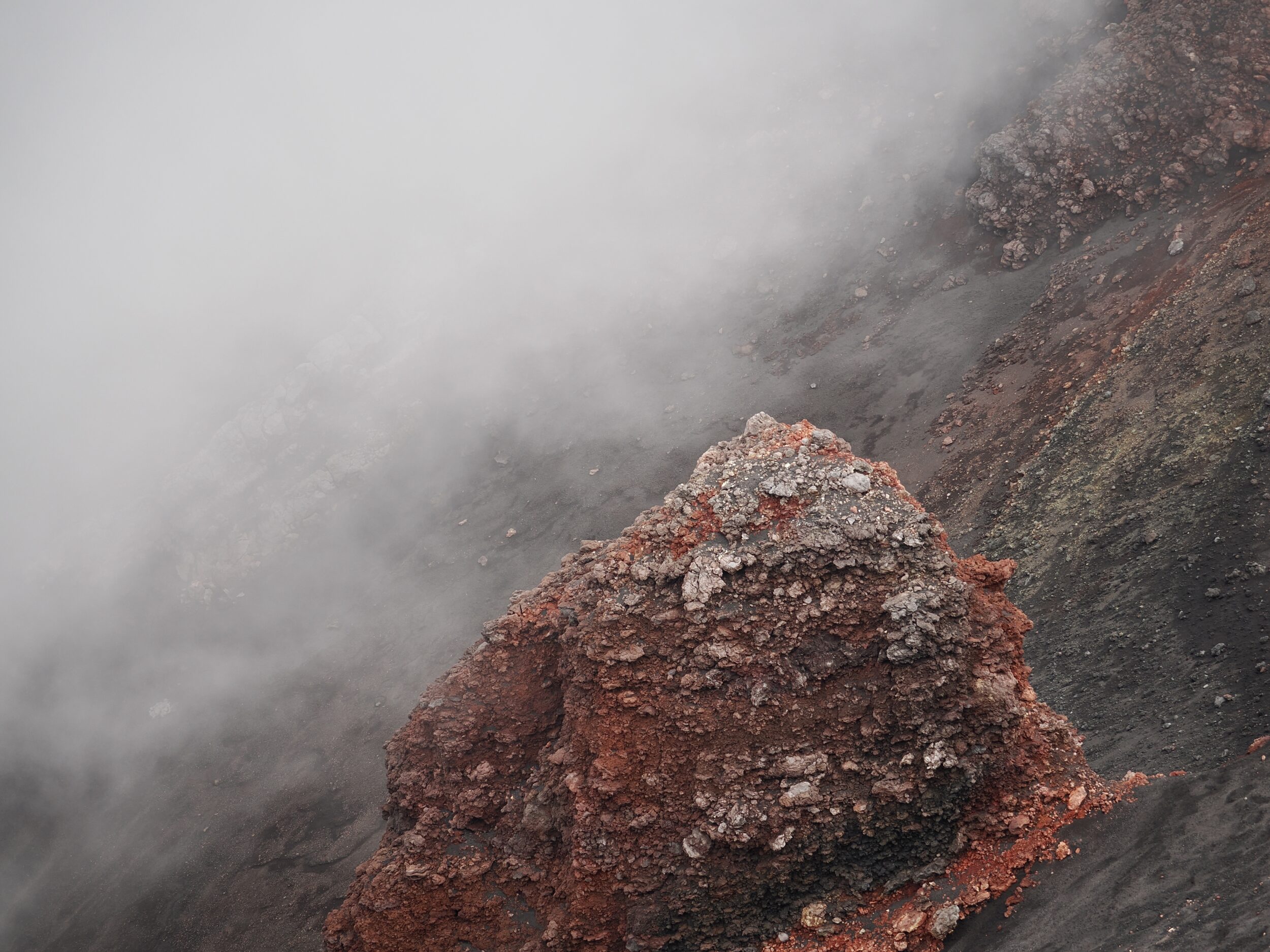When it is a very hot liquid, lava appears red.
As it cools, it becomes black/ish, and its flow slows.
As it cools more, it ceases to flow, is no longer lava, and has become rock – most commonly basalt, of a black/ish hue.
(“Punters” – yours truly included – often speak of “lava rock”. Geologists disdain that term. The geologists are right: “lava” is liquid, rock is solid. “Lava rock” is an oxymoron)
Basalt is the most common component of the earth’s crust.
However, not all volcanic rock is basalt, nor is black the colour of all relatively freshly-emitted basalt.
Also worth remembering: lava, steam, and hot gases are not volcanoes’ only “fresh fruits”.
Some volcanoes – and Etna is at times one of them – also “throw up” chunks of solid rock.
This post’s heroes may or may not be two such rocks.
Certainly, only their hue is currently “hot”.
On 30 September 2023 both were “cool”, temperature-wise.
Volcanoes sometimes hurl astonishingly huge rocks, over prodigiously long distances.
When such a rock lands on flattish terrain, a “bed” of volcanic “ash”, or on soft sand, it stays put – “rock, steady”.
However, if it falls on steep-enough, solid-enough ground, it’s “rock’n roll” time!
Rocks hurtling downhill can prove highly destructive – even lethal – in places kilometres distant from the relevant volcanic vent.
I do not know how the “rock stars” of this final chapter in Aspects of Etna reached their current resting places, but it is obvious that they did not simply “flow down, as lava, then cool and become rock”.
.

I think that their red colour probably tells us that these particular rocks are especially rich in iron or some other mineral that rusts/oxidises, and that a lot of rusting/oxidising occurred at high temperatures – within the volcano, or in a magma “chamber” that “fed” it – before Etna threw that material (in rock form) out into fully-open air.

If you wish to discover more about Etna, and about volcanoes in general, their respective Wikipedia entries are well-linked places to start; this, for Etna…here, for volcanoes.
Click this for an overview of recent research on Etna.
Fun fact: most of “our” planet’s volcanoes are in its oceans, with active vents and/or peaks positioned well below “sea level”.
Up next on Pelican Yoga: a series that celebrates the seaward/western side of the world’s oldest desert.
